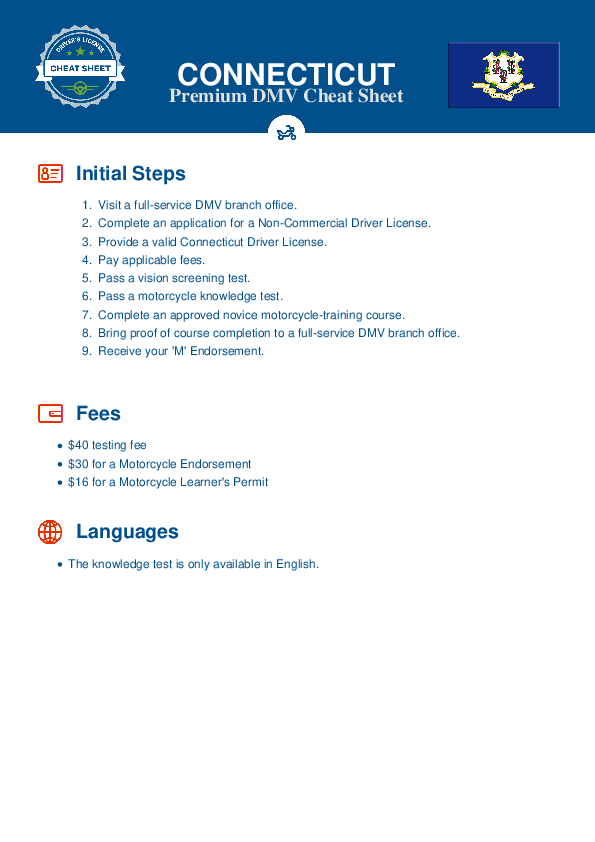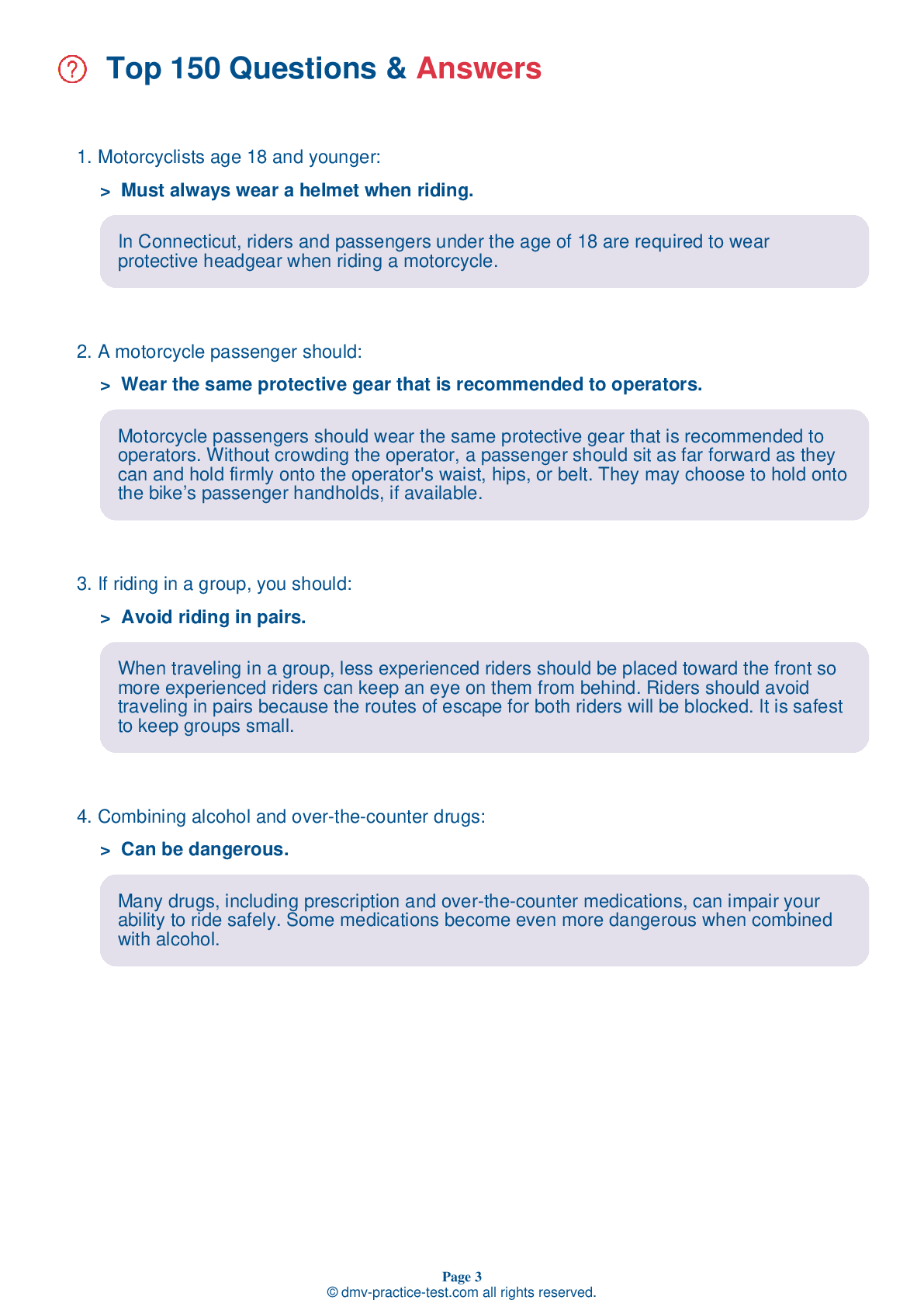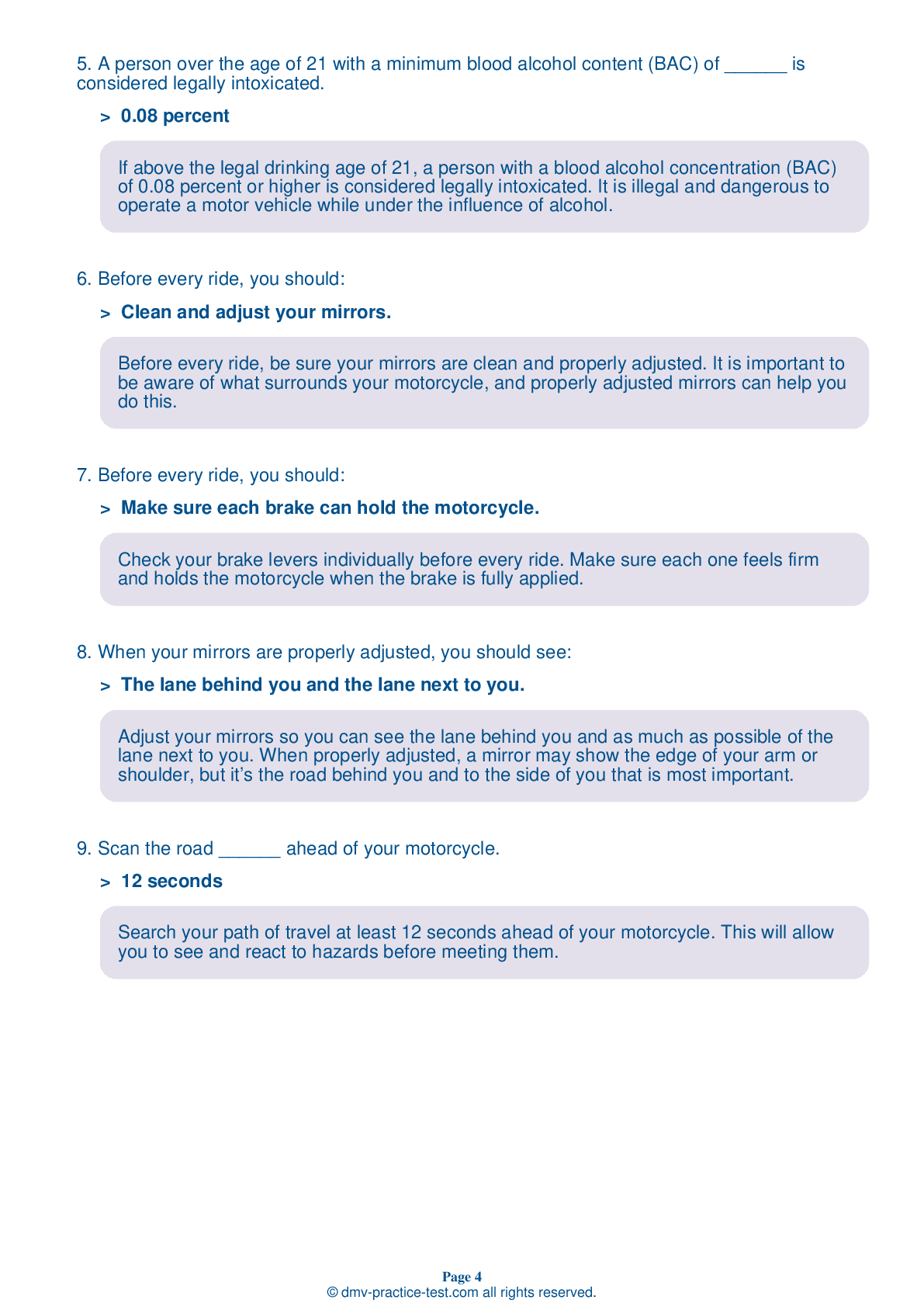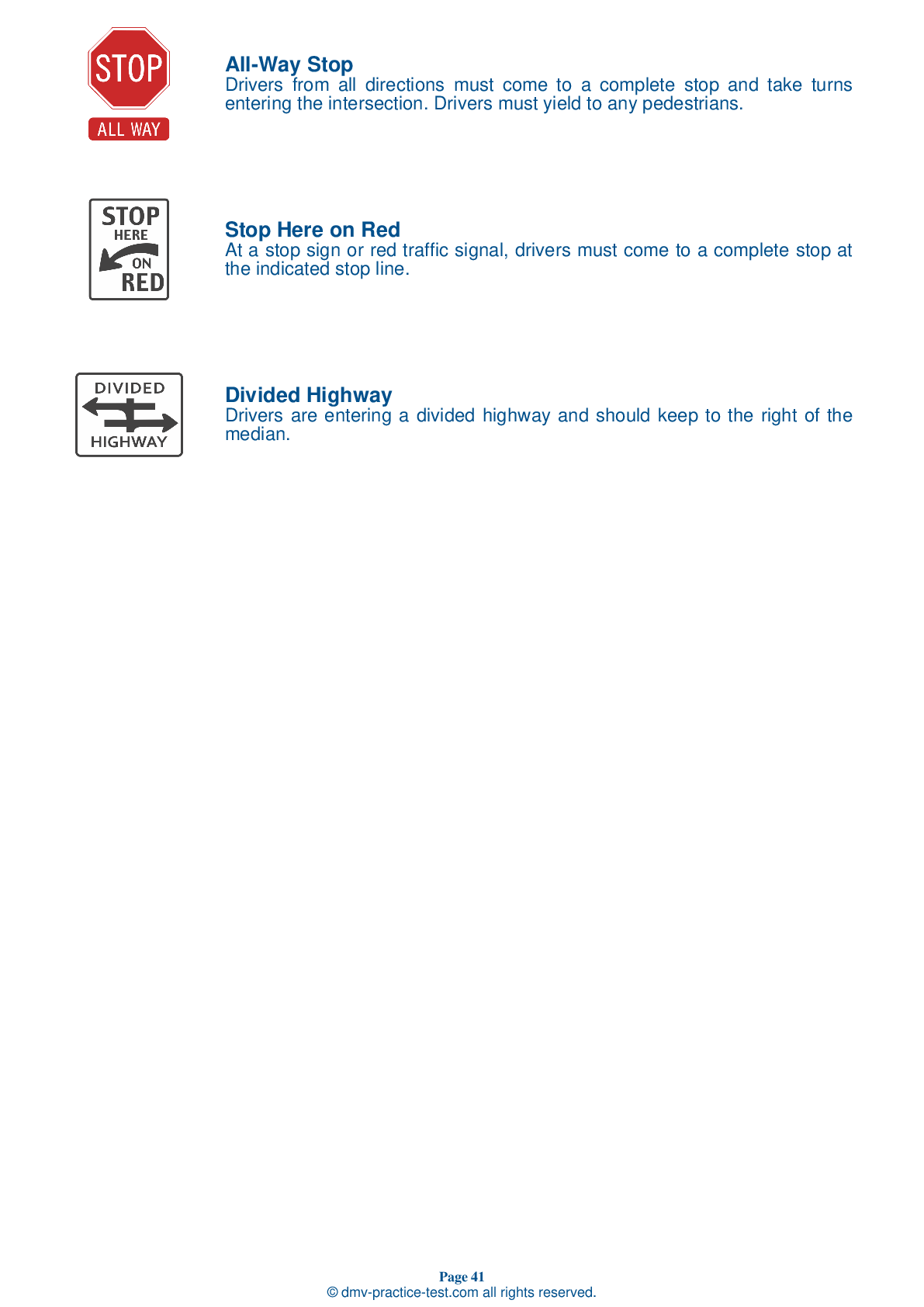Motorcycle Test | License CT 2025 | FREE Online Practice! #12 Page 2 of 3
Take this FREE motorcycle test (license in CT 2025) to check your knowledge of the road rules. To improve your results, download a motorcycle handbook online, study theory, and practice for free on our website. Still worried about how to get a motorcycle license in Connecticut in 2025? Check our website for more sample tests, train as much as possible, and boost your grades!
6 . What are the four steps to safely completing a turn?
To safely complete a turn, a rider should slow, look, press, and roll. The rider should reduce their speed when approaching the turn and look through the turn to where they want to go. They should press the handle grip in the direction of the turn and roll on the throttle through the turn to stabilize suspension.
7 . A street-legal motorcycle should have all of the following, except:
To be street-legal, a motorcycle should have at least a headlight, taillight, and brake light; front and rear brakes; turn signals; a horn; and two mirrors.
8 . When braking on a trike, you should know that:
An important handling characteristic to be aware of on a standard trike is that the two rear wheels have more braking power than the front wheel. Weight does not shift to the front wheel on a trike during hard braking in the same way that it does when braking on a two-wheel motorcycle. Instead, most of the weight stays on the rear wheels and makes the rear brakes more effective.
9 . Before starting out, your fuel valve should be:
Before setting out on a ride, you should make sure that your motorcycle's fuel supply valve is open. If the fuel valve is closed, the engine may still start with the fuel that is remaining in the lines from a previous ride, but it will stall once the lines are empty.
10 . The first thing you should do if your throttle becomes stuck is:
If your throttle becomes stuck, try twisting it back and forth several times. If this does not free your throttle, immediately operate the engine cut-off switch and pull in the clutch at the same time.
See the exact questions that will be on the 2025 Connecticut DMV exam.
99.2% of people who use the cheat sheet pass the FIRST TIME
Jeneen was tired of paying $5/gallon. She got herself a scooter that required the motorcycle license. She studyed the motorcycle test cheat sheet and passed her test the next day!
Christopher tells us how he knew nothing prior to obtaining the motorcycle study guide, and he only got one question wrong because he clicked on the wrong answer by mistake.



